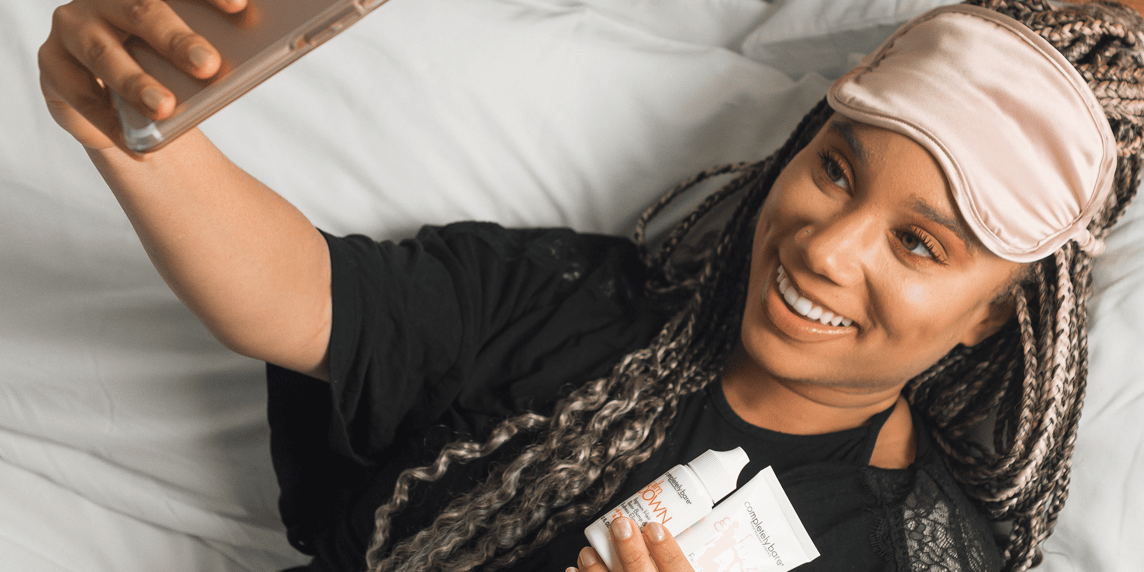-
 Written by Sean Dougherty
Written by Sean DoughertySenior Brand Creative at Funnel, Sean has more than 15 years of experience working in branding and advertising (both agency and client side). He's also a professional voice actor.

User-generated content (UGC) creators are changing the marketing game for brands. As social media has become deeply intertwined with our everyday lives, consumers aren't just sitting back and taking in brand messages anymore. They're actively shaping the image and perception of brands. Just search #ugccreator on Instagram, and you'll find more than 500,000 posts!
While influencer marketing remains a key factor in many companies' brand promotion strategies, audiences have grown accustomed to sponsored posts and are now seeking more authentic content from creators they trust. This is where UGC creators come in. They're offering a different, more down-to-earth, and genuine approach.
Funnel's global social media manager, Leah Agar, sees the effects of this shift to UGC content every day.
"Influencer marketing has shifted so much over time,” said Leah. “It's gone from brands mainly wanting to work with bigger names with larger followings, to many now preferring to work closely with micro-influencers as audiences find them more trustworthy and relatable. Consumers are just getting smarter, and if content feels inauthentic, they will just roll their eyes at influencer posts – just like they do with paid ads.

“UGC creators are an affordable way for brands to add character to what they’re offering and will only rise in popularity. The person making the content doesn't need to have a following or be well known. They just need to name their price and make content. It's a much more affordable way for brands to promote their products without needing to rely on big names to promote them."
But what exactly is a UGC creator, and why are so many brands trying to work with them?
What is a UGC creator?
Leah defines a UGC content creator as "someone who makes content for a brand and allows them to use that content to promote their products." This can include anything like photos, videos, reviews, blogs, and social media posts. The creators are not professional influencers or celebrities; they are regular people who are genuinely interested in a brand's products.
UGC creators offer authenticity and relatability that can be difficult to achieve with traditional influencer marketing.
User generated content looks like:
- Testimonials
- How-to guides or outfit combos
- Unboxing
- Reviews
- Product demos or recipe videos
@curatedbyange Organic UGC Example (Skincare) | @Airyday Skinscreens Mineral Mousse Dreamscreen ✨ See my previous video for the same product, but the Ad version. See my next video that explains the difference between Organic and Ad UGC videos! #ugccreator #ugcexample #ugcadexample #ugcskincare #ugcaustralia #ugccreatoraustralia #ugcmarketing #ugccommunity #ugccreatorjourney #contentcreator ♬ original sound - Ian Asher
An example of user generated content on TikTok by @curatedbyange
Why should brands consider working with UGC creators?
UGC is growing in popularity for multiple reasons. But what’s the hype? Here are some reasons why brands are turning to real people and real experiences for their content campaigns:
- Cost-effectiveness
It’s generally relatively inexpensive to have UGC made instead of a slick, agency-produced piece of content. UGC doesn’t replace professional content and branding, but it’s a powerful addition to your content mix. - Trust and authority
A Nielsen survey found that 50% more people trusted recommendations over other things like banner ads, text messages or SEO ads. That’s why using a UGC creator that has expertise in your field can boost trust levels. - Tailor-made content, fast
One of the best things about UGC is how quickly creators can turn around custom content and create videos for your brand. Just make sure your brief is clear, and you’ve checked your creator’s demos so you know roughly what your requested content will look like. - Conversions
UGC is seen as more trustworthy and relatable, so perhaps it’s no wonder that UGC sees 29% higher web conversions than campaigns or websites with only “professional” content.
Leah highlights the low barriers to entry for content creation as a key reason for brands to work with UGC creators.
"It's such a low barrier to entry for creating content, and doesn't require you to have people in-house or agencies creating content for your products," said Leah.
This accessibility allows for more authentic and native content, which often performs better for brand awareness and engagement. As consumers become better at detecting sponsored content, working with UGC creators allows brands to tap into a more genuine and trustworthy form of promotion at a low cost.
Is UCG going to be big in 2024?
When asked whether UGC creation will still be relevant in 2024, Leah responds with a resounding “yes.”
"The creators are realizing it's a great way to make money on the side without having to build a following,” Said Leah. “Meanwhile, brands don’t have to spend thousands on a team to create content for them. It’s a win-win."
She predicts a shift towards inclusivity in brand marketing, away from solely relying on well-known individuals. In her view, the trend is toward embracing diverse voices, allowing brands with a large UGC portfolio to connect more genuinely with a wider target audience.
Social media platforms used by UGC creators
Many UGC creators rapidly adapt to various social media platforms to maximize their reach, personal branding, and impact. While Instagram and TikTok are the primary hot spots for UGC, given their visual-centric and trend-driven nature, UGC is not limited to these platforms alone.
With its focus on high-quality imagery and engaging stories, Instagram offers a perfect canvas for UGC creators to showcase their work visually appealingly. TikTok, known for its viral content and creative freedom, allows UGC creators to experiment with trends and reach a younger demographic.
Other platforms like Facebook, Pinterest and YouTube are also becoming increasingly relevant for UGC. These platforms cater to a broader audience, allowing creators to diversify their content and reach different demographics. The adaptability of UGC across various social media channels underscores its effectiveness in reaching and engaging with diverse audiences.
"Most UGC I've seen has been on Instagram and TikTok, but it’s definitely being used in ads for other platforms, too," said Leah.
User-Generated Content in Ads
The use of UGC in brand marketing is not limited to organic social media posts. More and more companies are incorporating UGC into their advertisements, leveraging the power of authentic content in traditional advertising channels.
As we mentioned, UGC ads have been found to be more effective in driving conversions than traditional advertisements. Research has shown that 86% of consumers say authenticity is important when deciding which brands to support, while another 60% say content from family and friends heavily influences their purchases.
Example of a successful UGC creator
The user @ugcwithlauraa on Instagram is an inspiring example of a successful UGC creator. Just six months ago, she was unsure about starting UGC content creation as other creators had sparked her interest on TikTok. Deciding to give it a try on Instagram, she thought her first video might go unnoticed. Contrary to her expectations, her foray into UGC content creation was much more successful than she initially anticipated.
Within three months, she had gone from $0 to $6,500 in monthly income from her content. She now has over 35,000 followers and rapidly rising engagement rates. Her journey to become a UGC creator reflects the potential and accessibility of UGC creation for those willing to take the leap.
What kind of brands work with UGC creators?
Leah mentions that direct-to-consumer (D2C) brands frequently collaborate with UGC creators. These brands, which often include skincare, fashion, and lifestyle products, send their items directly to creators, who then produce content aligned with the brand's guidelines. This content typically features the products in real-world scenarios, emphasizing their practical use and appeal.
The creators' authentic portrayal of these products helps build trust and credibility among potential customers. This strategy is particularly effective for these D2C brands, since it realistically and showcases their products in a relatable way, often leading to increased consumer engagement and enhanced brand loyalty.
Consider the example of Glossier, a popular D2C makeup and skincare brand. Known for its fresh and minimalist aesthetic, Glossier often collaborates with UGC creators on Instagram to showcase their products in real-world settings rather than traditional product shots. By building an army of loyal and relatable UGC creators using hashtags like #GlossierRep and #GlossierPink, the brand has successfully tapped into a larger audience and established itself as a cult favorite among younger demographics.
What brands should look for in UGC creators
If your business is looking to collaborate with a UGC creator, great news! There are lots of fantastic creators with the perfect niche to fit your needs. Here’s what we recommend you look out for when choosing who you collaborate with to create content.
- Niche
Many user generated content creators will have carved out a particular niche. It could be anything from K-beauty to dog ownership to gluten-free cooking. Finding someone who already interacts with your focus area is key. - Platforms
As Leah said, Instagram and TikTok are the biggest channels for user generated content creation. But if those channels aren’t the ones your target audience is using, they’re unlikely to be successful. Choose a platform where your audience is active. - Quality
Most UGC creators will have example videos on their profiles. Do they speak with authority? Are their videos shot, lit and edited well? Are they confident on screen? If yes, you’re on to a good bet.
Pricing will vary from creator to creator. In a survey in 2023, Brands Meet Creators found that the median price per video (under 60 seconds) was $150. But you can expect that price to go up with more popular or experienced creators.
FAQ: Understanding UGC Creators
What is the difference between influencers and UGC creators?
Influencers typically have a significant following and focus on promoting products through their personal brand. UGC creators, however, may not have a large following, but their content is primarily focused on showcasing products in an authentic and relatable manner.
How do brands benefit from working with UGC creators?
Brands benefit from the authenticity and relatability of content from UGC creators. This content often resonates more with audiences than traditional marketing, leading to higher engagement and trust.
Can UGC creators work in any industry?
Yes, UGC creators can produce content for many industries. Their versatility and ability to create genuine branded content suit various sectors, from fashion to technology.
Are UGC creators more affordable than traditional marketing?
Generally, yes. UGC creators can be more cost-effective than traditional marketing methods, offering high-value content often in exchange for products or lower fees.
How do brands collaborate with UGC creators?
Brands typically provide products and a creative brief to UGC creators, who produce content aligning with the brand's marketing goals and aesthetics. Brands can find content creators directly on the platform by searching for “UGC”, as lots of content creators have this in their handle. But there are also websites like Thingstesting or Brands Meet Creators that assist in connecting the right UGC creator to a brand.
-
 Written by Sean Dougherty
Written by Sean DoughertySenior Brand Creative at Funnel, Sean has more than 15 years of experience working in branding and advertising (both agency and client side). He's also a professional voice actor.
